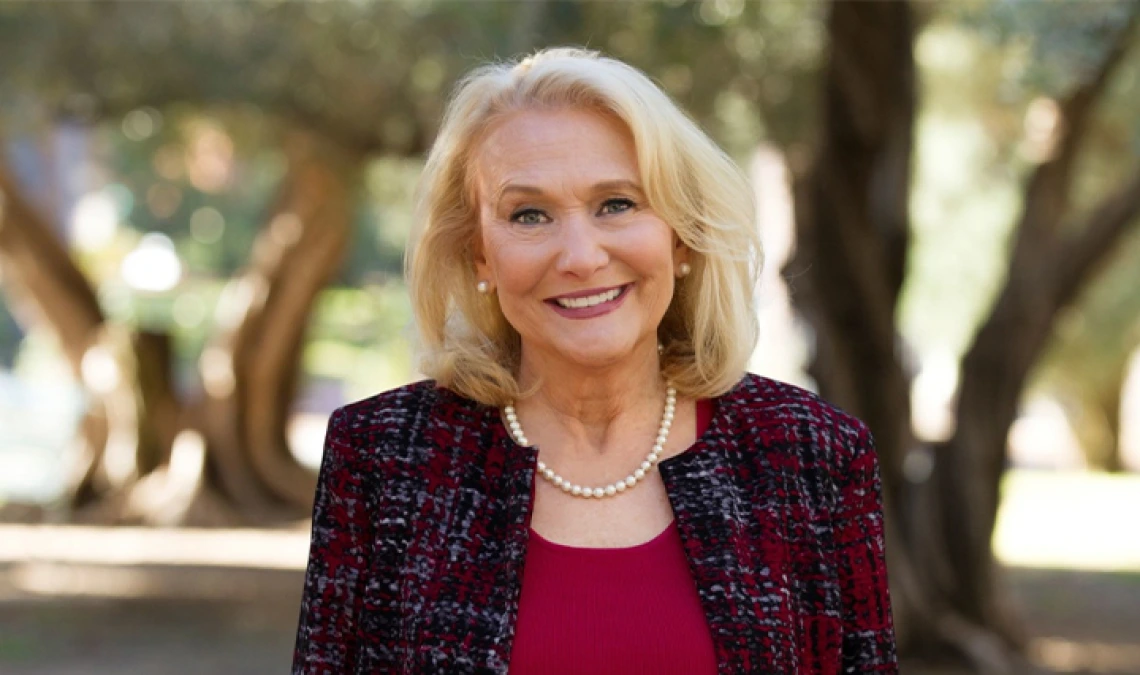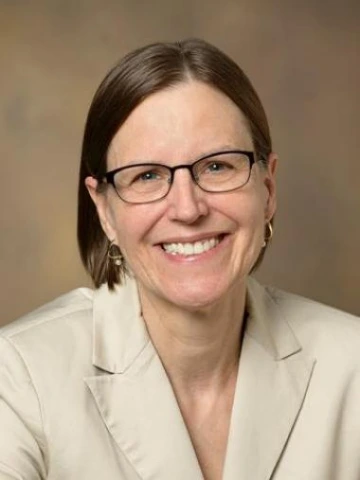Elaine Cunningham Appointed to Senior Director of Development
Cunningham will be responsible for developing and implementing the UArizona Cancer Center’s strategic plan for development.

Elaine Cunningham, BSN, RN, MBA, has been named the senior director of development for the University of Arizona Cancer Center. Cunningham previously served as a co-lead and director of development for the center’s philanthropic efforts in Phoenix since January 2019.
In her new role, Cunningham is responsible for crafting and implementing a strategic plan for development for the UArizona Cancer Center. She boasts more than 15 years of experience in designing and implementing strategic development plans for transformational gifts, and 18 years of critical care and bone marrow transplant nursing experience in academic medical centers.
“Elaine is a committed and accomplished strategic fundraiser,” said Joann Sweasy, PhD, the Nancy

Joann Sweasy, PhD
C. and Craig M. Berge Endowed Chair and UArizona Cancer Center director. “She has incredible skills in this regard, which are critical to our success. Funding from donors allows us to plan for the future and envision the next big breakthrough in cancer research.”
“I am very appreciative of this opportunity to be a part of something that is truly a one-team approach,” Cunningham said. “Dr. Sweasy is an inspiring, visionary leader for the Cancer Center, and we have incredible backing from the University of Arizona Alumni and Development program Together, and with the tremendous generosity of our donors, we can accomplish our common mission: to prevent and cure cancer.”
Since joining the Cancer Center, Cunningham has worked closely with leadership to develop effective strategies to secure philanthropic support through prospect identification, cultivation and management of a major and principal gift portfolio. She and Becky O’Hara, director of development, will continue these efforts as part of the revamped strategic plan.
The development team establishes meaningful and effective communication techniques to inspire donor commitments by relating basic research with patient outcomes. Donor funding is critical to supporting many of the non-operational needs of the center’s cancer research and originates from many different sources, including individuals, private and community foundations, and corporations. This can include funding for new cutting-edge equipment to conduct research, renovated lab space or seed funding.
“Every little bit can make a difference,” Cunningham said. “No matter the size of the gift, we see it as an investment in us. It is our responsibility to take very good care of that money and to let the donor how and why their money is being used in the way that it is.”
Seed funding is essential to starting novel investigations that otherwise would not receive federal funding from organizations such as the National Institutes of Health (NIH) or National Cancer Institute (NCI). Many pilot studies, particularly those in drug discovery and therapeutics, rely on philanthropists.
“If I didn’t receive donor funding, some of my projects would simply stall until I was able to find a funding stream,” said Joyce A. Schroeder, PhD, a research member in the Cancer Biology Program who has benefitted first-hand from donor-scientist partnerships. “The funding streams for therapeutic development are not well-established because it can be a risky investment. Many drugs fail when they get to (being tested on) humans, which makes it harder to get funding for the next drug.”
Dr. Sweasy added: “Philanthropy helps us perform high-risk, high-reward science. A lot of the big breakthroughs that we've witnessed over my lifetime have been funded by philanthropists.”
The Cancer Center has continued essential patient care and cancer research throughout the COVID-19 global pandemic. Cunningham also has adjusted the way that she and her team meet and interact with donors during the challenging times. Once routine, travel is now limited, which includes no out-of-state trips. Most meetings are by phone or Zoom.
“It has made a big difference in how we cultivate the relationships,” Cunningham said. “Our primary concern is the sensitivity to the individual. How have they been affected? What are they comfortable with?”
From there, the connection with donors can begin focusing on cancer. Understanding the donor’s goals, connecting them with researchers and presenting opportunities to fund specific projects or equipment are among some of Cunningham’s objectives.
“I have a passion for what we are doing at the Cancer Center,” Cunningham said. “I feel as though I am representing everyone at the Cancer Center in my meetings and conversations with donors. When we can bring people together with the science, that is absolutely magic.”


